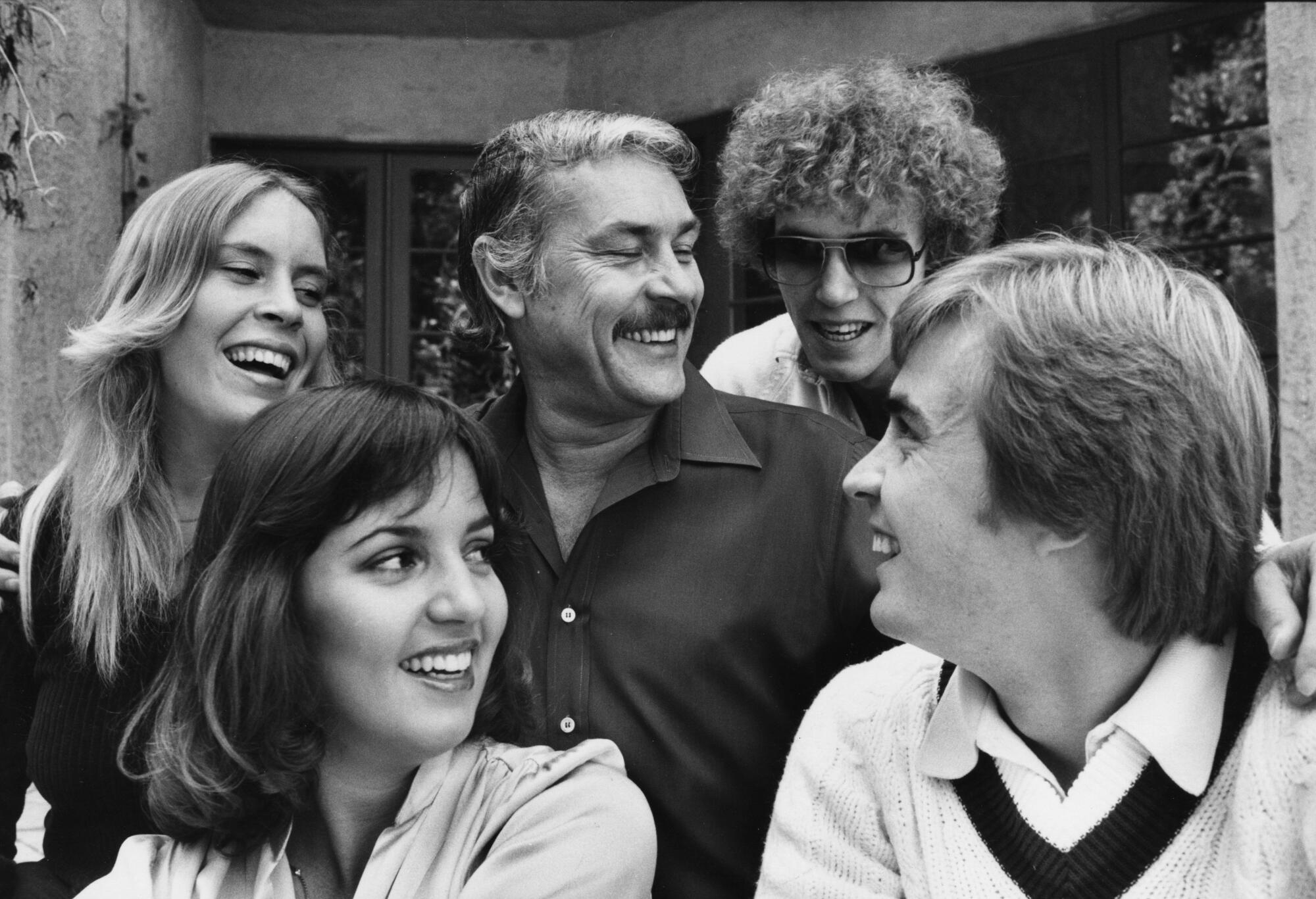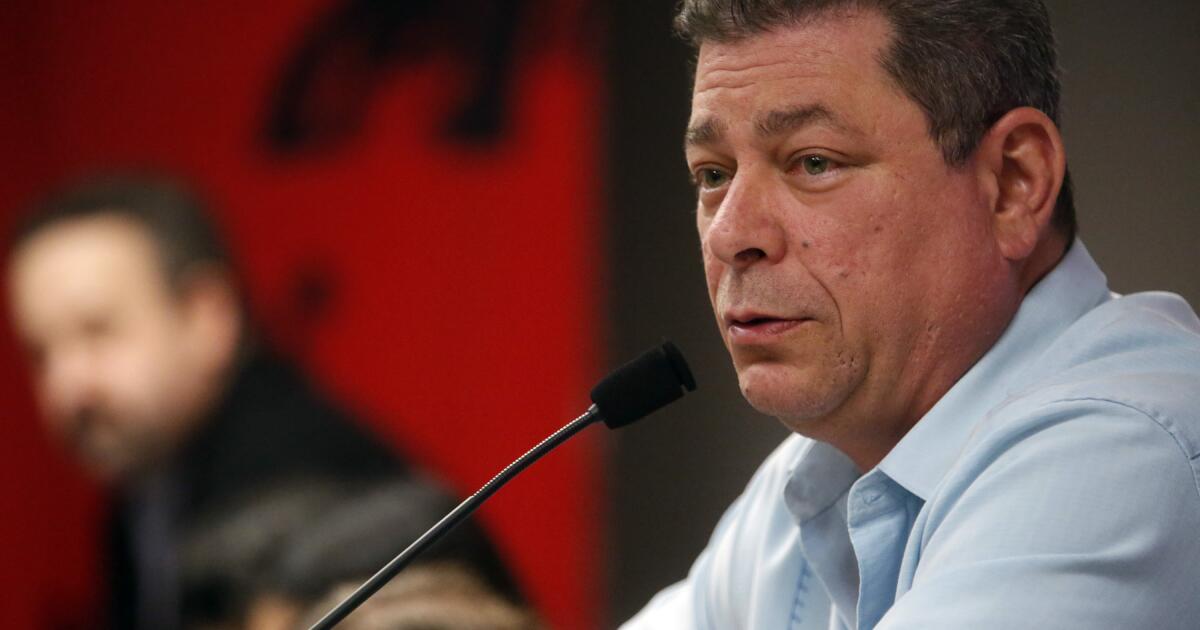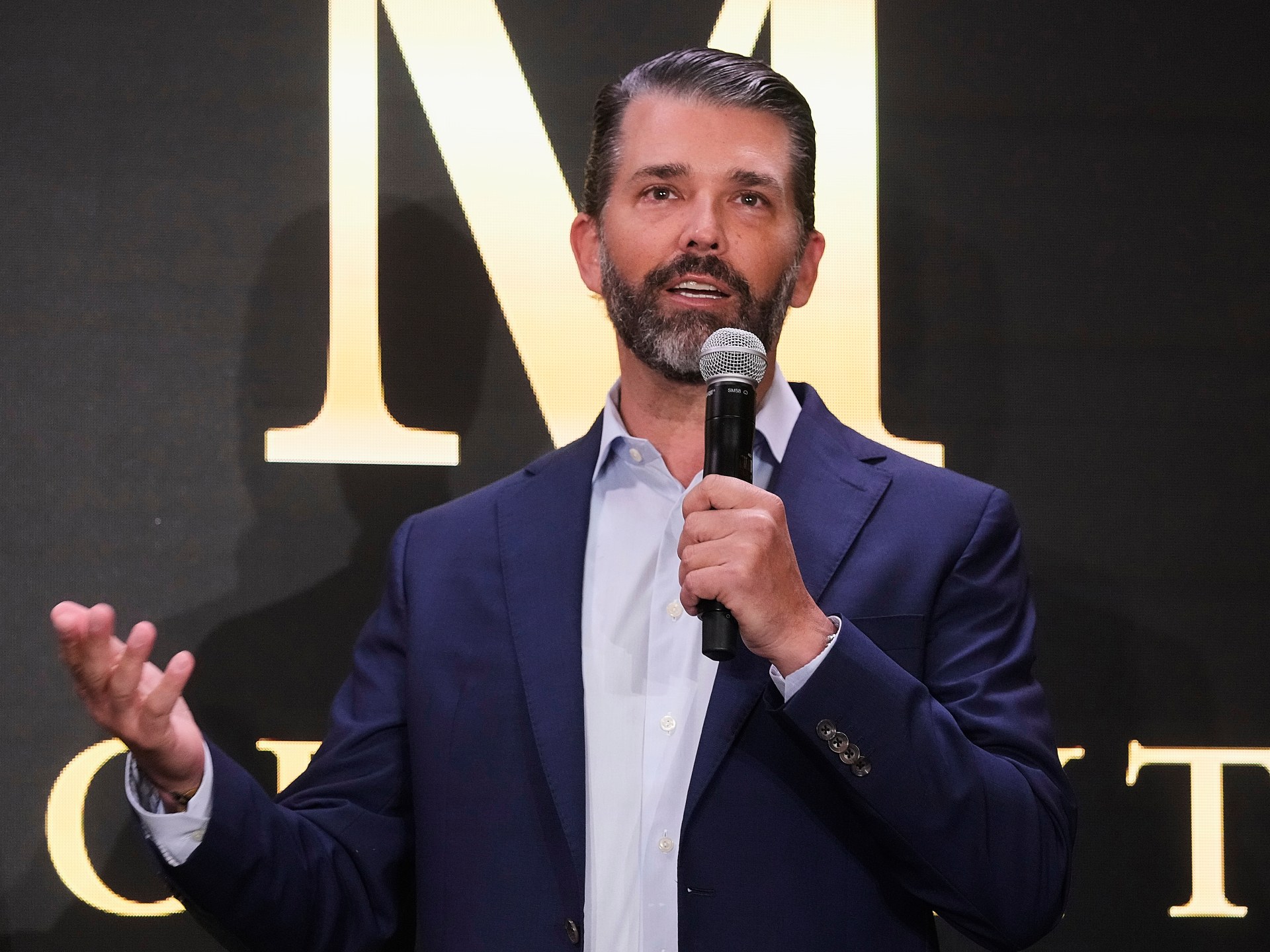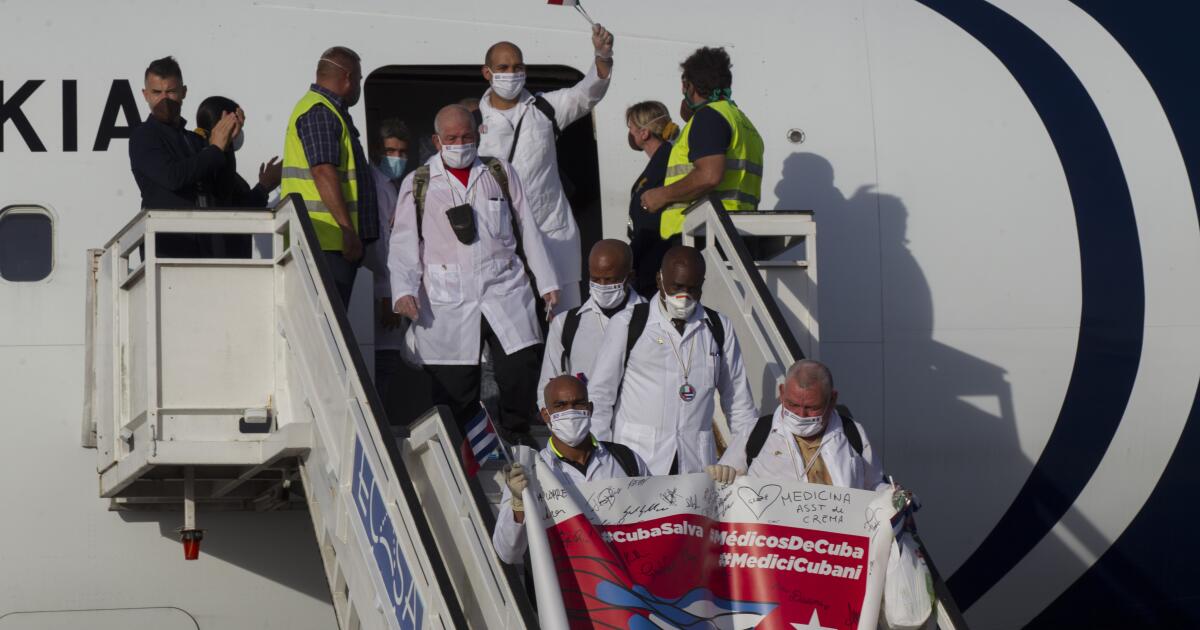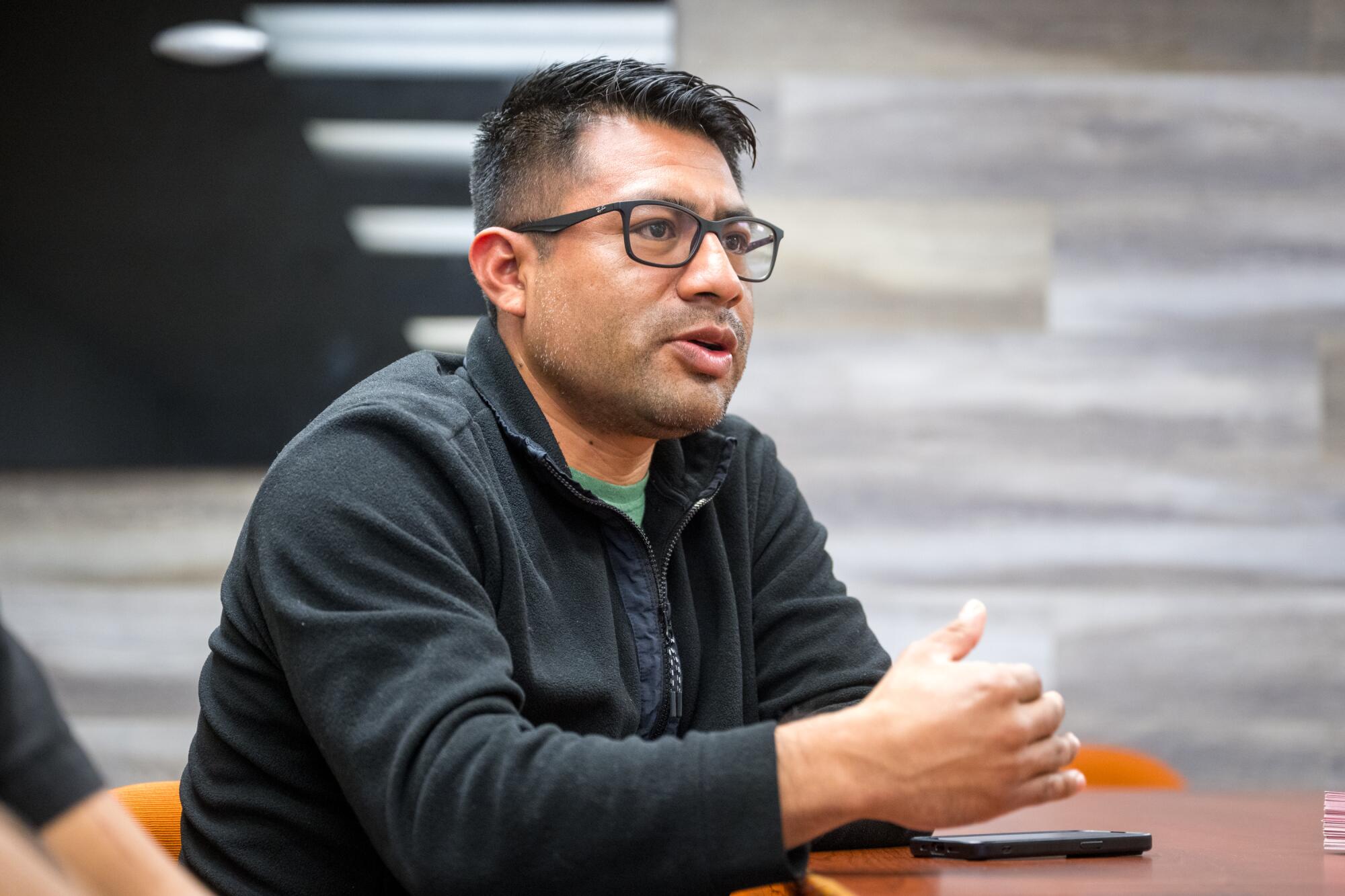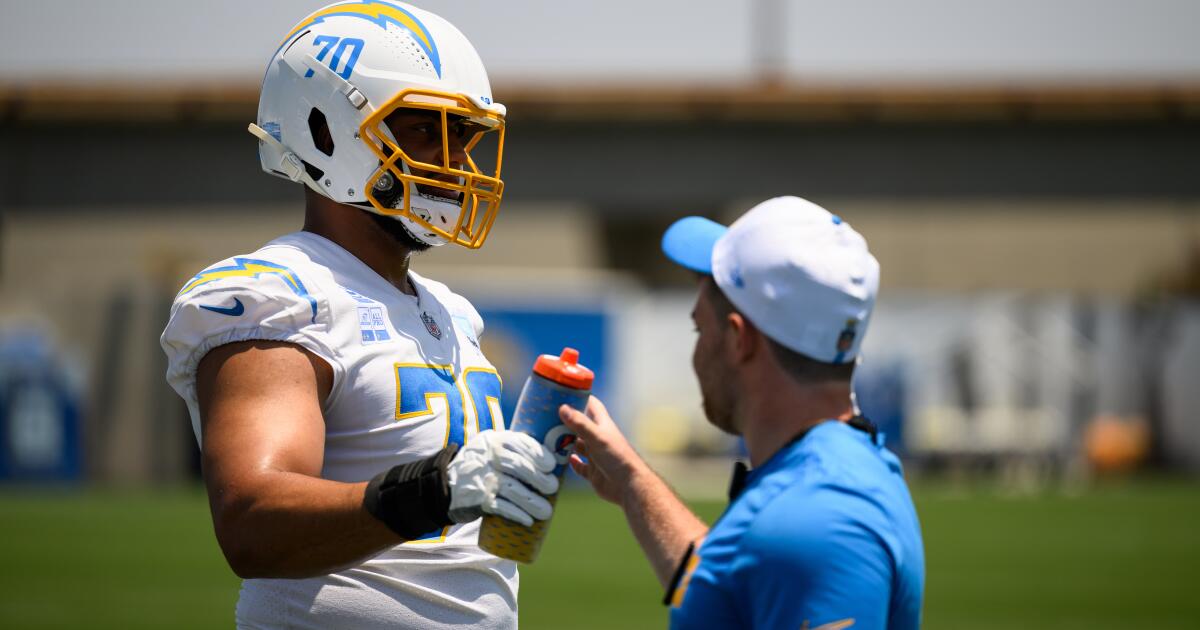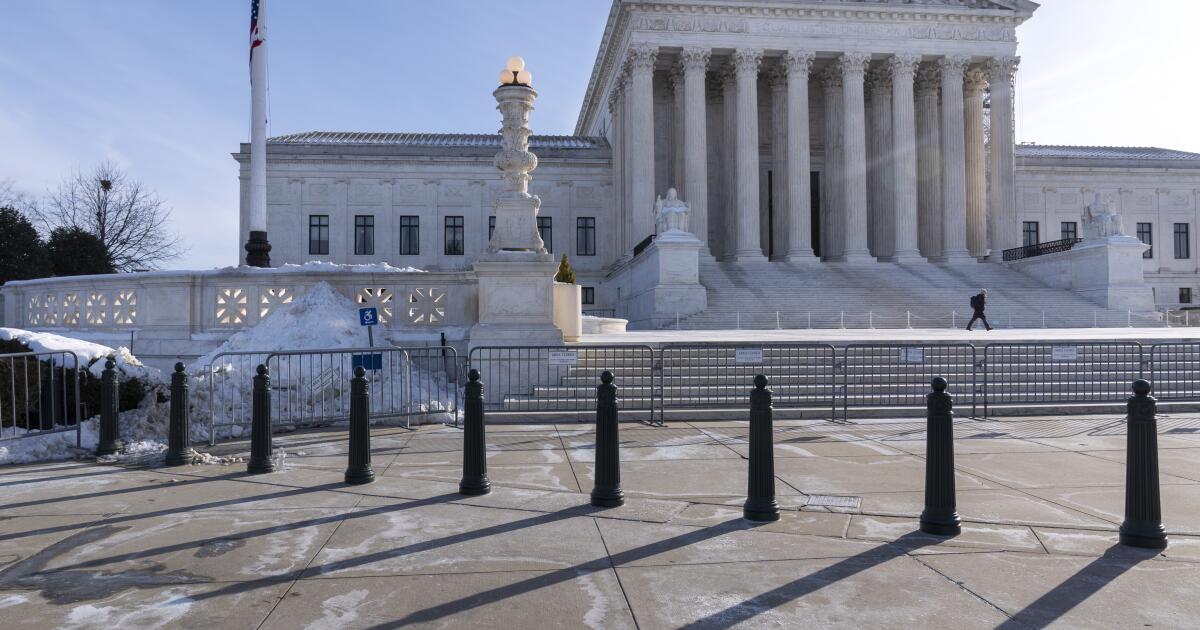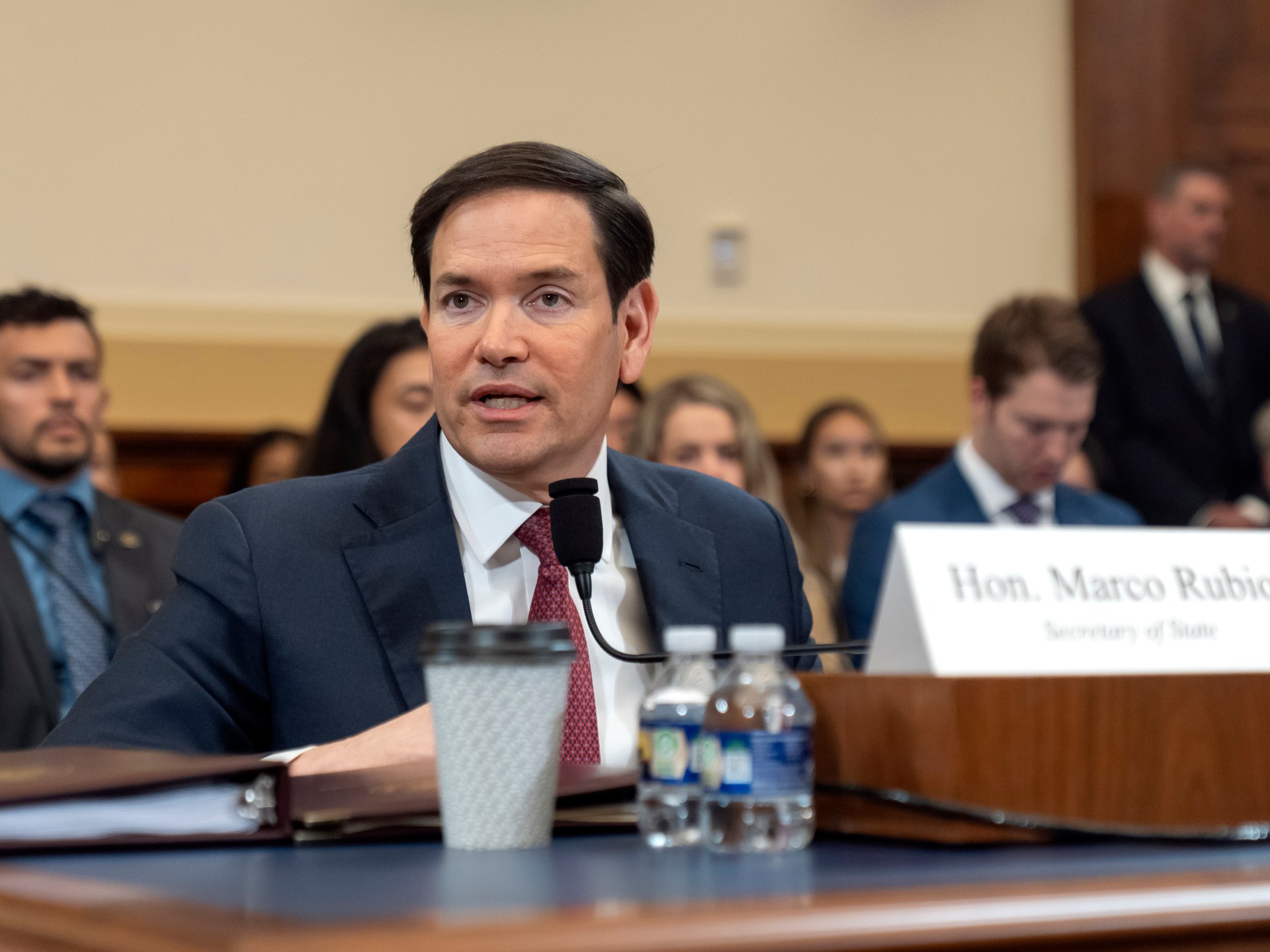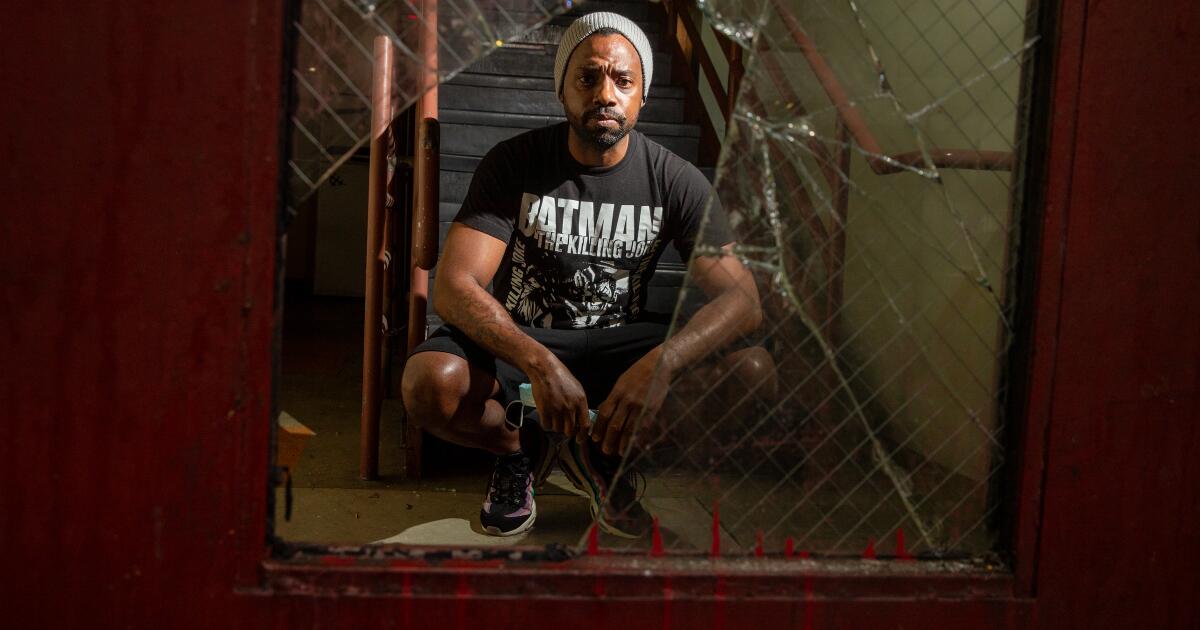How the Buss family made the Lakers a Hollywood marvel
The story is so good, so rich, that Hollywood couldn’t resist.
The Lakers, a golden brand. The stars on the basketball court. The celebrities on the sidelines. The spotlight on the show flying up and down the floor 24 seconds at a time.
HBO made a series. Books have been authored. Documentaries have been filmed. No hyperbole is too outrageous.
Magic Johnson and Larry Bird helped save basketball. The Lakers were the greatest show in town. The highs and lows, the devastation and the jubilation, made them iconic.
And the ringmasters for the last 45 years have been the Buss family.
That era culminated Wednesday when a majority of Buss’ six children agreed to sell controlling interest of the franchise to Mark Walter for a record price — a $10-billion valuation that’s the highest in pro sports history.
The initial reaction to the news — a sale that shocked the Lakers’ biggest partners inside and outside of the NBA — centered on what it will mean for the organization. Will Walter and his partners pour the same financial resources that they’ve deployed to turn the Dodgers into the best team in baseball? How will their capital boost the weakest areas of the franchise’s infrastructure? What will happen next?
We don’t know for sure. We do, though, know what just wrapped — an era of pro-sports ownership unrivaled in success and melodrama.
The start
Dr. Jerry Buss wasn’t a physician — the title came from a degree in chemistry at USC. And the money? It didn’t come from science. It came from real estate. But Buss was always one to sense an opportunity, and Jack Kent Cooke’s record-breaking divorce settlement meant that he was about to capitalize on one.
In 1979, Buss scrambled to put together a wild business deal — properties and cash moving between Buss, third parties and Cooke before the self-made man ended up with The Forum, the Los Angeles Kings and, in what would be his legacy, the Los Angeles Lakers. The price was $67.5 million.
The timing was impeccable. The team would win a coin flip and with it the right to select Johnson with the No. 1 overall pick in the draft. Buss’ and Johnson’s relationship helped lay the groundwork for the player-empowerment era that dominates the current NBA, Buss realizing faster than his peers that the biggest and best players were what drove the league’s success.
In his first season as owner, the Lakers won an NBA title, kicking off a decade-long battle with the Boston Celtics that helped the NBA move from the margins of pro sports to the mainstream.
In this 1979 photo, Lakers owner Jerry Buss is shown with children (clockwise from top left) Janie, Johnny, Jim and Jeanie.
(Gunther / mptvimages.com)
Yet it was more than Johnson leading fastbreaks, flashing smiles and dishing no-look passes. It was the merging of sports and entertainment that helped define what fans now experience.
In 1979, shortly after purchasing the Lakers, Buss commissioned the first Laker Girls dance team. The Forum Club became one of the city’s hottest nightspots. The games were more than athletic contests. They were events.
For the first 12 seasons Buss owned the team, they never won fewer than 54 games in an 82-game season. Titles came in 1982 against the 76ers, 1985 and 1987 against the hated Celtics and 1988 against Detroit.
The Lakers built one of basketball’s most unstoppable machines — Jerry West in the front office, Pat Riley on the sideline and Johnson, Kareem Abdul-Jabbar, James Worthy, Byron Scott and Michael Cooper flying on the break.
As Buss became one of the NBA’s most powerful figures, his children were at his side, learning the business. His daughter, Jeanie, famously helped organize events at the Forum. The family’s true promoter spirit couldn’t be suppressed — soccer, indoor tennis, roller hockey, the Buss family tried it all.
Even after Johnson’s stunning retirement after his HIV diagnosis, the Lakers missed the playoffs just once before they fully reloaded, first with Shaquille O’Neal, then with Kobe Bryant and finally with Phil Jackson.
Nothing, though, would last forever.
The transition
In 2005, The Times’ Hall of Fame basketball writer, Mark Heisler, wrote about Buss’ succession plan coming into focus.
“Jerry Buss wanted a crowd-pleasing basketball team the movie stars could relate to but might have gone too far,” Heisler wrote. “He wound up with the greatest floating soap opera in sports, and basketball was almost beside the point.”
Still, it was Buss’ legacy.
“I just can’t visualize myself walking away, relinquishing control,” Buss said in a 2002 story in The Times. “My relationship with this team is a lifelong marriage.”
The thing about family businesses, it turns out, is that family drama is always at play.
A Sports Illustrated feature in 1998 painted a story of jealousy and unease that seemed prophetic.
Kobe Bryant, left, holds the Larry O’Brian Trophy as Shaquille O’Neal holds the NBA Finals MVP trophy in 2000.
(AFP / Getty Images)
As Buss scaled back his involvement, Jeanie took on a greater role in the business side of the franchise while son Jim became a basketball executive. And the Lakers kept on winning.
Tensions between O’Neal, Bryant and Jackson ended with the dissolution of another dynasty after three consecutive championships. Belief in Bryant led to two more rings once they reunited him with Jackson and added Pau Gasol to the mix.
Through it all, the Lakers remained a family business in its truest sense, Buss’ youngest sons Joey and Jesse learning the ropes in business and scouting in the same way his older children did.
Jeanie‘s romantic relationship with Jackson, at best, complicated things in the organization. Still, she was always the one her father intended to lead the organization, beginning when Buss put her in charge of the team’s indoor tennis franchise when she was just 19.
“I figured, ‘If Dr. Buss [she refers to him by his preferred title] says he thinks I can do it, I must be able to do it,’” Jeanie told The Times in 2002.” If he never doubted me, how could anyone else? It was only later that I thought, ‘What the hell was I doing?’”
In 2005, son Jim began to take on a bigger role in the organization, becoming the team’s vice president of player personnel.
“When I hear somebody say, ‘Are you qualified?’ I’m like, ‘If you had eight years of Jerry West plus Mitch Kupchak and all the talented scouts working on a daily basis tutoring you, I don’t know what other credentials you could have,’” Jim said then.
When Buss died in 2013 from complications of cancer, all six of his children held titles with the Lakers.
“Jerry Buss helped set the league on the course it is on today,” then-NBA commissioner David Stern said. “Remember, he showed us it was about ‘Showtime,’ the notion that an arena can become the focal point for not just basketball, but entertainment. He made it the place to see and be seen.”
While Buss was living, the Lakers missed the playoffs only twice. In the six seasons after his death, the Lakers never won more than 37 games.
Something had to change.
The fallout
Bryant took a fateful step at the end of a game late in the 2013 season, his Achilles tendon rupturing in his left leg. He miraculously made two free throws before heading to the locker room — a moment codifying him as an all-time Los Angeles legend and a moment, it turned out, that signaled the good times were about to end.
The following season, coach Mike D’Antoni’s Lakers won just 27 games, Nick Young leading the Lakers in scoring and Bryant playing only six times. After the year, Jim Buss told The Times that he saw a pathway forward and he told his family the same in a meeting earlier in 2014.
“I was laying myself on the line by saying, ‘If this doesn’t work in three to four years, if we’re not back on the top’ — and the definition of top means contending for the Western Conference, contending for a championship — ‘then I will step down because that means I have failed,’” he said. “I don’t know if you can fire yourself if you own the team … but what I would say is I’d walk away and you guys figure out who’s going to run basketball operations because I obviously couldn’t do the job.
“There’s no question in my mind we will accomplish success. I’m not worried about putting myself on the line.”
In 2015, the Lakers won only 21 games. In 2016, the team lost a franchise-most 65 times against a franchise-worst 17 wins. In 2017, they were headed to another season in which they would be more than 30 games under .500 when Jeanie fired Jim and Kupchak, the team’s general manager.
They were replaced with Bryant’s former agent, Rob Pelinka, and Johnson.
Jeanie Buss applauds the Lakers’ efforts during the team’s 2010 NBA championship ring ceremony at Staples Center.
(Chris Carlson / Associated Press)
Shortly after the decision, Jim, along with his brother Johnny, tried to remove Jeanie from the team’s board of directors, sparking a legal feud that included Jeanie filing a restraining order while she wrested control of the team.
“I must also point out that Jim has already proven to be completely unfit even in an executive vice president of basketball operations role and I recently had to replace him,” Jeanie said in court documents.
The Lakers signed LeBron James in 2018, traded for Anthony Davis and built a title team in 2020, the family’s biggest success in the years following their father’s passing.
With Jeanie firmly in charge, brother Joey helped run one of the league’s most-respected developmental teams in the South Bay Lakers — a program that helped develop players such as Alex Caruso. Jesse Buss and his scouting department found value in late first-round picks like Josh Hart and Kyle Kuzma as well as an undrafted star in Austin Reaves.
In 2022, Jeanie produced a documentary for Hulu that dealt with heaps of the family’s drama, and Wednesday’s sale not coming from a majority — and not unanimous — vote again means that not everyone is on the same page.
While the Buss family will retain minority ownership, things will never be the same in the organization. The influx of money, of modernization, of more corporate structure could help the Lakers on the court.
But what they were under the Buss family, they’ll never be again.
“I really tried to create a Laker image, a distinct identity,” Jerry Buss once said. “I think we’ve been successful. I mean, the Lakers are pretty damn Hollywood.”
And on that era, the credits have begun to roll.
